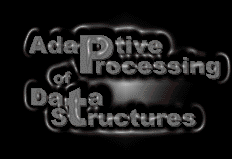 |
The NAUTILUS |  |
 |
The NAUTILUS |  |
NAvigate AUtonomously and Target Interesting Links for USers
 |
Adaptive Processing of Data Structures |  |
| Flexible Schedules and Soft Constraints
(in collaboration with: Ames Research Center ) |
| Neural Network Methodologies in Gas Turbine Diagnostic |